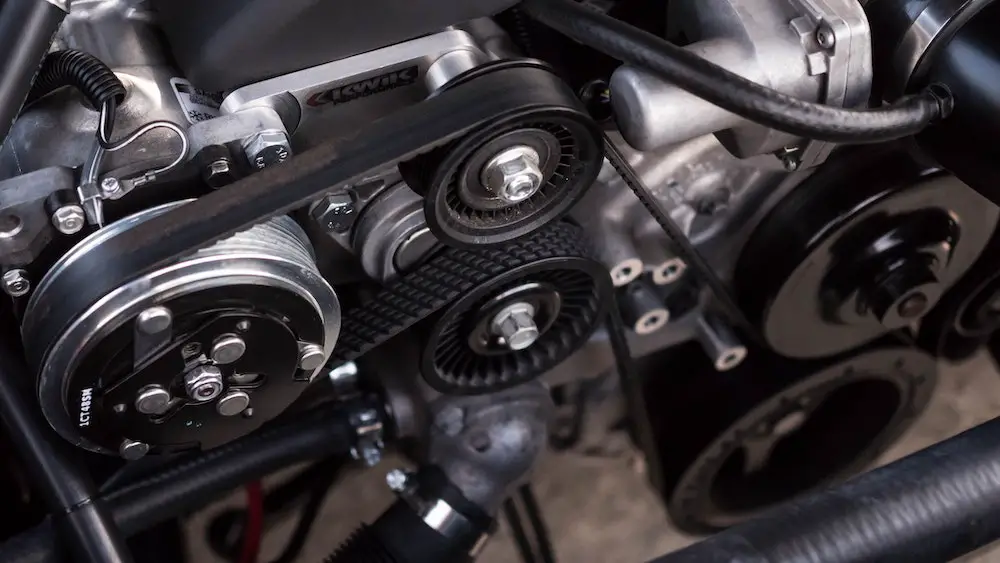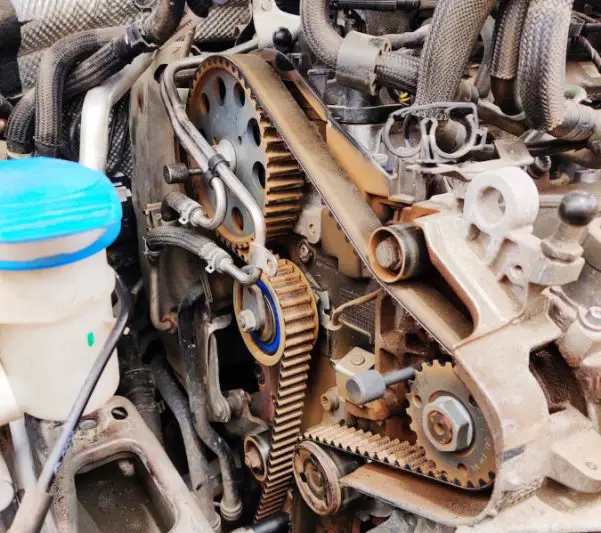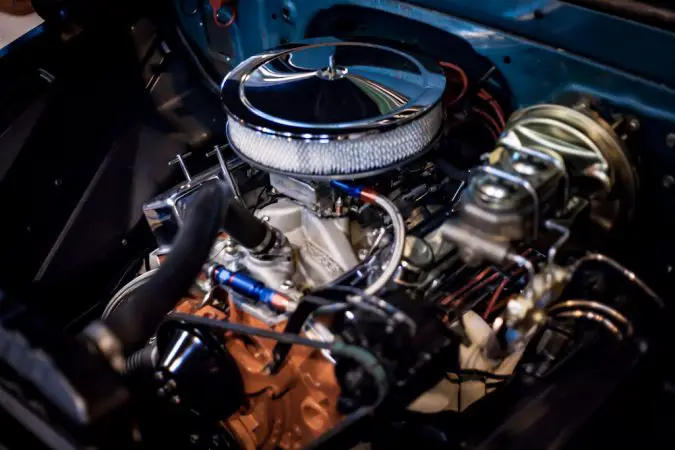If you are a new guy in the car world and you are just curious to find out and learn what are the types of car belts then this article might be just the right one for you because there is a lot to cover on this topic and also learn when it comes to tackling possible issues when it comes to belts in your car.
Also, doing research and learning more about internal combustion engines will give you that extra edge when it comes to troubleshooting problems. And troubleshooting is mastery itself. Knowing how everything works will give you great input when it comes to doing service and maintenance.
You probably don’t want to pay thousands of dollars on repairs done by suspicious mechanics. You need to learn if you can do this work by yourself and also what is more important to do it right on time before there is not something major developed. Doing preventive maintenance is key if you don’t want to pay extra on fixing problems at a later date. And here is where types of belts come into play.
In this article, we are going to learn what is a car belt. Then we will take a look at why these types of car belts are essential for running a car. Then we will cover the different types of car belts that are out there. And after that, we are going to focus on the maintenance and repairs when it comes to these different types of belts. So let’s get into it.
What Is A Car Belt?
A car belt is a flexible belt made out of rubber material in most cases. A belt is connecting at least two rotating shafts.
The belt is using this rotating energy that is supplied from one of the shafts to power the rest of the shafts. So, in this case in the internal combustion engines. The power is supplied by the crankshaft which is located in the center of the engine.
Then this energy that is received is transferred to the components that need this rotational energy to work properly.
Belts serve a great purpose and make our lives easier. If there weren’t rubber belts we would still rely on chains that are also used but are relatively quite expensive and not that practical. Even though they are more durable and can withstand quite a lot of beating.
It is important to note that one belt is created for a single application and cannot be used for anything else. As you can tell the belt is a never-ending circle that rotates.
So, this belt was designed to serve your vehicle specifically. You cannot install your belt on another car because either the belt would be too short or too long. There will be no tension at all and without tension, the belt is practically useless and does not serve a purpose.
Whenever you need a belt for your car, the most important thing is to find one based on your engine code. In parts stores like Autozone or Oreilly’s, they have these belts in stock most of the time. And even if they don’t you can make an order and come and pick the belt at a later date when the part comes in.
Why They Are Essential In Running The Car
Timing belts are essential for the engine work to be perfect. If there is something wrong with the belts there could be damage caused to the engine. This damage could be so large that could even scrap the engine altogether.
That’s why it is crucial for you as an owner to make sure that you service your car at the right intervals. Skipping an interval will result in some damage that will not be repairable and serviceable later on.
In addition, if you skip these intervals and do not replace your belts and pulleys can also result in some poor engine work.
For example, the pulleys have a limited lifespan and they know to fail soon after they reach the end of the lifespan. And in some cases even before that.
So, you can experience squealing from the belt as well as visible wobbling that greatly affects the complete balance of the engine. This can be most pronounced if you are running an LS engine on your car. Especially if it was a police car that has been running for thousands and thousands of hours in a stationary position.
That’s why these components like belts and pulleys have to be serviced on time and without any delays. But what are the different types of car belts? Well, that’s what we are going to discuss next where we will cover all of the different types of car belts in detail.
Different Types Of Car Belts Used On Car?
Now let’s discuss the different types of car belts that are used in cars. Knowing the different types of belts will make you able to distinguish which of them you are having and also which belt is for which purpose. Because not all belts are made equal and some of them have different tasks and roles to play. So, let’s cover these types of car belts.
1. Timing Belt
The most important belt that you probably have is the timing belt. The timing belt is the one that makes the combustion inside of the engine possible and makes sure that everything is perfectly timed.
The timing belts are most often used on engines that are overhead camshaft design. This means that they are used to power the camshaft or camshafts that are located on top of the engine head.
At the bottom, the engine is connected with the crankshaft that drives the pistons and the belt goes to the top of the engine where it turns over the camshaft. Without this belt, the ignition process would be completely impossible and you will not be able to start the car.
Because even if the bottom of the engine turns over, the top of the engine that includes the valves will remain closed and the engine will not be able to create combustion.
As their name implies, the timing belt has to be perfectly timed. If the timing belt is not timed properly. There could be some damage inside of the engine.
Let’s say that you have bad timing caused because the timing belt has jumped a few millimeters or the belt has snapped. In this situation, there will be some damage created inside of the engine.
In some cases, this damage is not even repairable and you will have to replace the whole engine altogether. The components will simply collide with each other and when metal collides with metal, carnage happens. This carnage will be created inside of the cylinders and the engine will be trashed.
But what about the other types of car belts? More on that in the following chapters.
2. Accessory Belts
Next in line are the accessory belts. But what does the word accessory mean? It means that these types of belts are made to power accessory components that require something to power them for them to work. If there is no belt, the accessory units will not function at all and you will sooner or later be left without power in your engine. But what are these two types of accessory belts? Let’s find out.
2.1 V-Belt
The V-belt is probably one of the earliest accessory belts that were invented on old V8 pushrod engines. These belts were made out of necessity to power some components that were needed so the engine would work properly.
The V-belt design is very basic and usually connects only two rotating shafts. One shaft is smaller, while the other shaft is a larger one. From there, they derive the name V-belt because whenever you see a belt like this, it has that unique V-shaped design.
What is bad with these belts is that they can only supply power to one accessory. Let’s say that this accessory is the alternator. You have one V-belt for your alternator and that’s it.
If you want to install an air conditioner. You will need another V-belt to power the air conditioning and so on. This can put a lot of stress on the crankshaft pulley because it is running so many belts. Making this design pretty outdated and old.
So, something else had to be invented and this problem sorted out. Because the number of accessories kept rising and installing new belts was pretty much unpractical. And what was invented to tackle this problem we are going to cover in the following chapter.
2.2 Serpentine Belt
As we said, something had to be done to make room for all of the new accessories that were added to the internal combustion engines. Thus new types of car belts had to be invented and installed on the vehicles.
And that’s how the serpentine belt came in the highlight and became something irreplaceable on modern cars.
But how was made possible to power up so many different components from the crankshaft with only one belt? It is quite simple.
This is all made possible because of the tensioner pulleys that are installed on the engine block. There is one and sometimes even more pulleys like this that do not have any specific role than transfer the movement of the belt in the car.
This made it possible to bend the belt at some points and make it quite more useful than the V-belt that we covered above.
These serpentine belts are also extremely durable and can go and go for a really long time before they start to fail. Sometimes even the pulleys fail before these belts do. So, if you are listening to some whining noise coming from the engine bay, this might be the problem that you are looking for. When these belts are close to the end of their lifespan, they can start to develop noises.
But more on that, we are going to cover in the following chapter where we will discuss the types of car belts and when they should be replaced and the possible consequences of not replacing them on time.
When You Should Change These Types Of Car Belts?
Like every other component in your car, the belts have to be replaced. It doesn’t matter if you are running a serpentine, V-belt, or timing belt. All belts are prone to failure. Especially the cheaper options that are produced by some less reputable brands.
But how many miles do they last to be more precise? Well, it depends much on the age of the belt.
As you know belts are made out of rubber and this rubber becomes hard after many years of usage. So, the belts can develop cracking even if they are not that extremely worn out.
It is recommended for these timing belts to be replaced every 5 years or every 60,000 miles. They can also go up to 100,000 miles. But the sweet spot is for this job to be done somewhere in between if you want to avoid the possible risk of engine damage if the belt snaps.
You can inspect the belt pretty easily, just grab a flashlight and see if there is cracking developed. Also, do not forget to check the teeth of the belt and see if there are some teeth missing.
This is also important since the teeth hold the timing belt at the right timing. If the belt jumps, then the timing will be messed up and engine damage can occur. That’s why pay attention to these aspects on the timing belt.
When it comes to accessory belts, they also have to be replaced after 60,000 miles. Replacing them is not urgent though, even if the belt snaps, you will not get engine damage. But the car will shut off eventually. It also might overheat in the worst cases. Still, the best is to make sure that it is changed on time.
Timing Belt VS Timing Chain
We covered the types of car belts. Now let’s discuss some different topics. Like the example in this chapter. This is a topic that confuses quite a lot of people and frankly, it also confused me as well many years ago. And that is the timing belt vs timing chain issue.
Are they the same or not? They are not the same but they are doing the same task. They both make sure that the timing inside of the engine is perfectly in check and the engine works well.
But what makes them different is the way they are engineered. For example, the timing belt is quite cheap to replace and easy to manufacture. Making it an affordable option.
But some automakers, want to go for something safer and they install timing chains on their vehicles.
The timing chain has to be inserted inside of the housing and lubricated all the time if you don’t want to have your timing chain damaged. Also, unlike pulleys, the timing chains are using plastic tensioners that keep the tension on the chain. These also can crack from age and make the timing chain jump and damage can happen.
That’s why it is good to investigate the market and see which timing chain-driven cars have problems with these tensioners. I’m saying this in case if you have to replace the tensioner you will also have to replace the chain as well. And this requires getting the engine out of the car. And this work is quite expensive to perform.
Luckily, timing chains lest quite a bit more than timing belts or other types of car belts. More precisely, double the miles of the timing belt or even more in some cases. Which is quite good.
Can I Install A Timing Belt On My Car?
We covered the types of car belts, now let’s see if you can install a timing belt on your car. Installing a timing belt is not something that you can do right off the bat. Even experienced mechanics do not let inexperienced trainees mess up around timing belt replacements. And this is with a reason.
Even if you install the timing belt properly and mess up the timing for only a few millimeters, the engine will not be perfectly timed and engine damage will happen to it. The valves will get crushed depending on how big of a mistake that you did.
So, don’t try this at home if you don’t have the proper training and experience to do this work. Because these small mistakes can cost you a whole fortune to get a completely new engine for your car.
On the other hand, replacing a V-belt or a serpentine belt is not something dangerous and anyone can do it. You just release the tension on the belt tensioner and you remove the belt. Then you install the all-new serpentine belt. It’s that easy.
Just be sure that you mount the belt in the same way you removed the old belt. Taking a few pictures before you do the job will do the trick. By doing this you will know how to install the belt. We have covered the types of car belts now let’s see how costly is to replace them.
Cost To Replace Different Types Of Belts
We covered the different types of belts. Now let’s take a look at how much do they cost to replace. We will start with the timing belts. These belts are the most expensive when it comes to replacing them. The part alone is relatively cheap and could be found for $50 to $100. But the labor is costly and can cost you anywhere between $400 to $600 to do a timing belt job with the labor and parts.
Serpentine belts on the other hand are cheaper to do and they can be replaced with less than $300 for the parts and the labor. But why the timing belts are so more expensive to do?
This is the case because of the level of expertise that is involved in this job. Doing a timing belt job is not a thing that anyone can do and it requires a certain level of knowledge for this replacement to be performed the right way. You don’t want to end up damaging the engine and that’s why you will pay a bit more to get this work done right.
Timing chains on the other hand are even more expensive because they require removal of the whole engine in some cases and replacing them can cost even up to $2,000. So, if you pay $400 you might consider yourself to be lucky.
What If You Don’t Change The Belts On Your Car?
Now let’s see what can happen if you don’t change the different types of car belts in your car. As we said, the timing belt is regulating the timing of the engine. So, if the belt gets damaged or snaps. The timing will be ruined and your car will probably get some engine damage. Since these engines that are using timing belts are interference engines.
In non-interference engines, if a belt snaps you don’t have to worry much about possible damage. But what are non-interference engines? These engines are the engines that are not running an overhead camshaft system. More precisely the pushrod V8 engines. These are relatively damage-proof when it comes to situations like this because are chain-driven plus they are non-interference type.
Engine Belts: Facts You Need to Know
- Belts play an important role in the operation of the engine by powering a part or a set of parts within the engine.
- The number of belts an engine has depends on the engine’s age and design.
- Timing belts power the engine’s camshaft and keep it in sync with the crankshaft, ensuring that the valves open and close at the right time.
- Timing belts usually need to be replaced after 90K-110K miles, and it’s recommended to replace the water pump at the same time.
- Fan belts power the cooling system, which cools the radiator and circulates coolant through the engine.
- Without a functioning fan belt, the engine may overheat, causing costly repairs.
- Alternator belts power the alternator, which charges the battery, and may also power the power steering pump.
- Serpentine belts replaced older V-belts and power all the engine accessories, including the power steering pump, water pump, alternator, and air conditioning.
- A serpentine belt usually lasts 60K-100K miles, but it’s recommended to include it in routine inspections.
- Belts have evolved over the years, with serpentine belts being longer and wider than older V-belts, improved material quality allowing for longer-lasting belts, and several V-belts on older engines being combined into one serpentine belt on newer engines.
Conclusion Types Of Car Belts
In this article, we covered quite a bit when it comes to the types of car belts. First, we learned what are these belts and what are the different types of car belts.
As we can recall, there are timing belts, V-belts, and serpentine belts. The timing belt is used to drive the engine while the V-belts and serpentine belts are used to run accessories like the A/C system, water pump, alternator, and other important components that are essential for the car to run right.
Lastly, we covered the costs of replacing each of these belts and as we saw, the timing belt is the most expensive one when it comes to replacing. But this shouldn’t mean that you should not replace it. The more you delay the replacement, the bigger is the chance for engine damage to happen.
The serpentine belts on the other hand are not that dangerous when it comes to snapping. If this belt snaps you will only lose the accessories.




